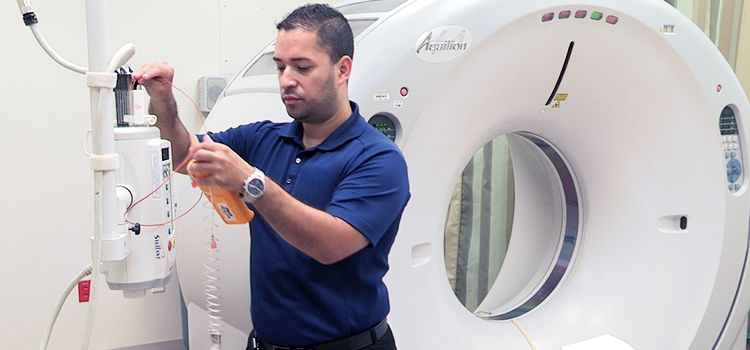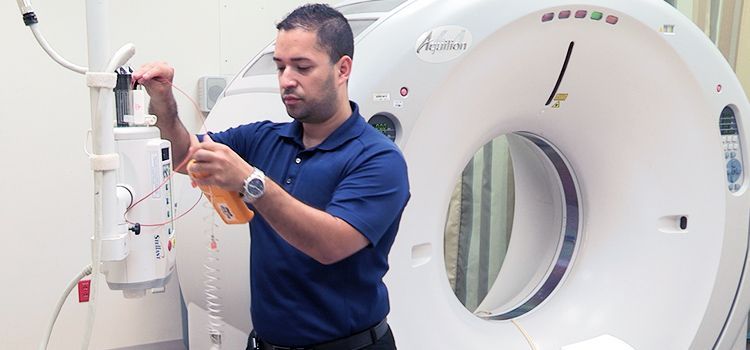
Boost Your BMETs: 3 Tips from a Clinical Engineering Vet
Clinical engineering departments are being tasked to do more, yet staffing levels have not increased to keep up with the heavier workload. Whats more, BMET demands are changing too. How can hospitals meet these demands and address technician needs?
Thu Aug 22 2019
Clinical Engineering Departments are Feeling the Crunch
Clinical engineering departments are being asked to do more, while addressing a host of challenges they’ve never encountered before. This includes an aging and rapidly retiring workforce, increased technology complexity and competing responsibilities. With so many hurdles, it can be difficult to develop a long-term strategy and carry out quick wins.
The challenge is that many biomed departments are stretched too thin addressing these issues, and it’s putting a strain on clinical engineering budgets and responsibilities. This pressure makes it harder for clinical engineering directors to install value-added changes in the department.
Tim Moss, Director of Resident Based Programs at Agiliti, is no stranger to the difficulties facing clinical engineering departments. Moss has spent over 20 years working at all levels within clinical engineering, including serving as the system director for a 14-hospital network. He has also worked for various independent service organizations (ISOs) in management and leadership roles.
We chatted with Tim to better understand the challenges reshaping in-house clinical engineering departments, and to identify steps biomedical directors can take to free their technicians to do more. Here are three key takeaways:
1. Balance Your Biomedical Staff’s Workload
If you have highly-trained biomedical technicians, is it the best use of their time to be maintaining low-value, low-revenue equipment? Probably not. And not only is it poor utilization of your staff, but it can also be frustrating to those highly-training staff members who aren’t able to utilize their skills, which can lead to staffing issues down the road.
Here’s a rule of thumb: A full-time general biomedical equipment technician (BMET) can support about 1,000-1,200 devices. But as a biomed tech takes on more sophisticated equipment, the equipment-to-technician ratio should decrease.
“Your imaging technician is going to [be responsible for] three or four [imaging devices], or a maximum of 50 items” if you include lower-value equipment, says Moss, “because the devices he or she is supporting are much more technically complicated and take a lot more time, and the preventive maintenance requires [a greater time commitment].”
As a way to recapture some of the time techs spend servicing, searching for and tracking down lower-end equipment, like beds and infusion pumps, some hospitals choose to outsource the maintenance for these devices. This could be a big win for a clinical engineering department as it can ease the burden on the team. Having your most talented BMETs focused on high-value devices not only makes your team more valuable by reducing the financial impacts that occur when a high-end piece of equipment is backlogged, it also helps create a greater sense of job satisfaction.
2. Give Your BMETs Training And Continuing Education Opportunities
If someone asked you what’s one of the top reasons for biomedical staff turnover, what would you say?
In our experience, one reason that bubbles to the top is when a facility does not have a clinical engineering program that gives them a clear path to grow their career. As a younger generation of technical experts enter the workforce, they’re increasingly looking for a job that offers new insights, experiences and opportunities for growth.
“In order to attract the right skilled individuals, you’ve got to be able to have a program that’s going to grow them, that gives them a career path. If they are biomeds, what does it take to get them to laboratory service engineering, or imaging, or an MRI service engineer?” Moss says.
How can you help? Provide trainings and possibilities for them to build project management skills, improve IT abilities, expand their tech skills on more complex devices and develop objectives that directly impact the CE team. In the process, your BMETs will become more involved and invested in the culture you’re creating. Read our blog post, “How Hospitals Can Attract & Retain Millennial Biomed Technicians” to learn more.
3. Look For Alternative Methods To Reduce Overtime Costs
Clinical engineering directors only have a finite set of full-time staff within their organization.
“When you have unplanned projects, such as mergers, large equipment systems being installed, recalls, PTO or military leave,” Moss says, “it pulls your staff away from their core responsibilities.”
At which point keeping up with preventive maintenance and managing corrective repairs on time is more challenging. Many times, the only way CE directors know how to manage this workload is to increase staff overtime.
There are issues with this, though. It’s costly and it contributes to staff burnout.
When administration looks at the impact of your extended overtime hours, they don’t have a clear understanding of why it is going up. Every administration is challenged when overtime exceeds more than 10 percent of the staffing budget.
Clinical engineering directors need to be able to articulate the impact and why that cost is going up. This is especially hard when administration is asking if there is somewhere else cuts can be made to reduce overtime.
Finding the right staffing model and partnering with qualified organizations to help can reduce the impact of unplanned events on clinical engineering budgets. This might be outsourcing lower-tech medical equipment, supplementing biomed programs with third-party technicians, or developing a better system that minimizes the unexpected.
One option is to conduct a value analysis of the clinical engineering department. In it, insights can be gained on the current workload including an analysis of inventory to determine useful life, service history, technology relevance, risk and liability, and an operational assessment.
These three tips can play a big role in helping clinical engineering leaders to develop a team that is prepared to address upcoming challenges in healthcare technology management. For more detailed information on how to attract and retain top healthcare technology management talent, download this tip sheet.
Visit Agiliti's Resource Center to discover more, or learn more about Clinical Engineering Services.

